Your Guide To Cooking With Every Type Of Onion
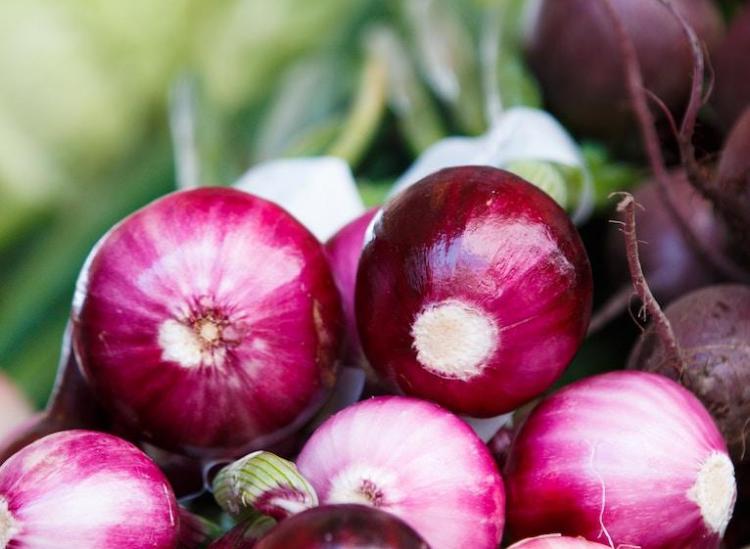
Unsplash/Thomas Martinsen
Onions are one of the fundamental building blocks of every cuisine. The bulb vegetable can range anywhere from mild to strong to aromatic to tear-inducing. Depending on the variety, onions can be acidic, salty, sweet, spicy or bitter. Onions often start out pungent and sharp but can end up sweet and tender.
When you’re at the grocery store, the onion section can be overwhelming. You have bins on bins of varieties and it can be stressful if you don’t know what you’re looking for. Here’s your guide on cooking with every type of onion so you never have to wonder again.
Yellow Onions
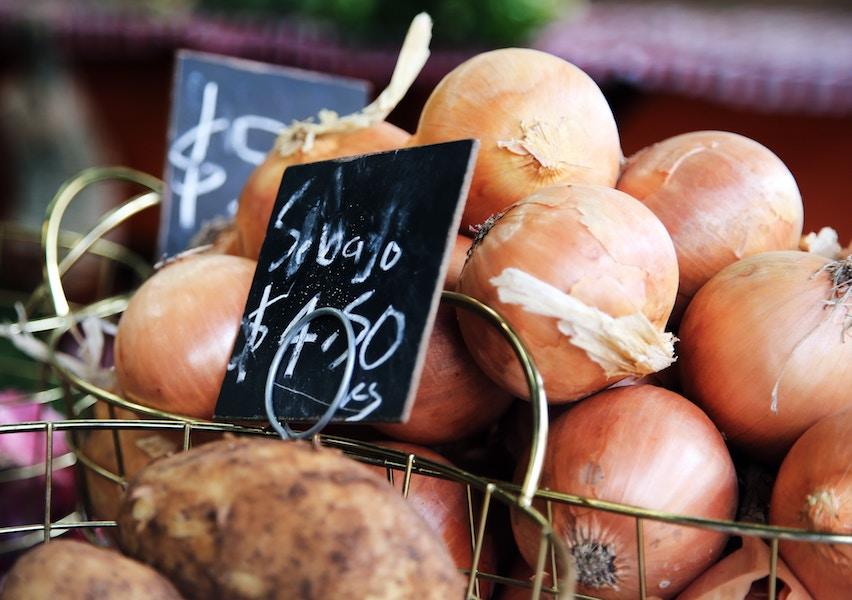
Unsplash/Caroline Attwood
A yellow onion is considered the all-purpose onion. It’s a balance of sweet and pungent and becomes sweeter as it cooks. These versatile onions are about the size of a tennis ball with a tough outer skin and thick layers. Spanish onions, which are a specific type of yellow onion, are sweeter than regular yellow onions with a delicate flavor. You can use yellow onions for pretty much anything you’re cooking.
White Onions
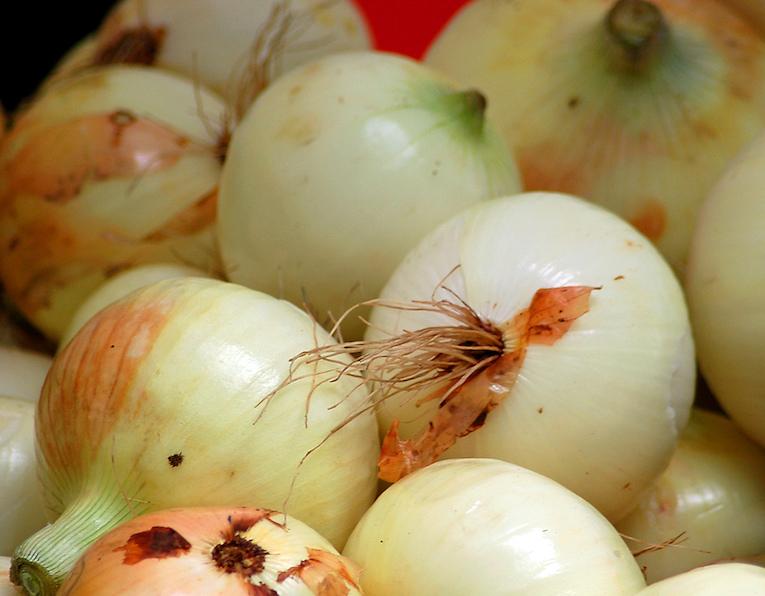
Flickr/Marco Verch
With a sweet and mild flesh, white onions have a white papery skin, a crisp texture and a mild flavor. Most of the time you’ll see white onions that are about the size of a baseball or a softball. You can serve them raw in your salads and sandwiches or sprinkle them on your pizza. White onions are also common in many Mexican dishes.
Red Onions
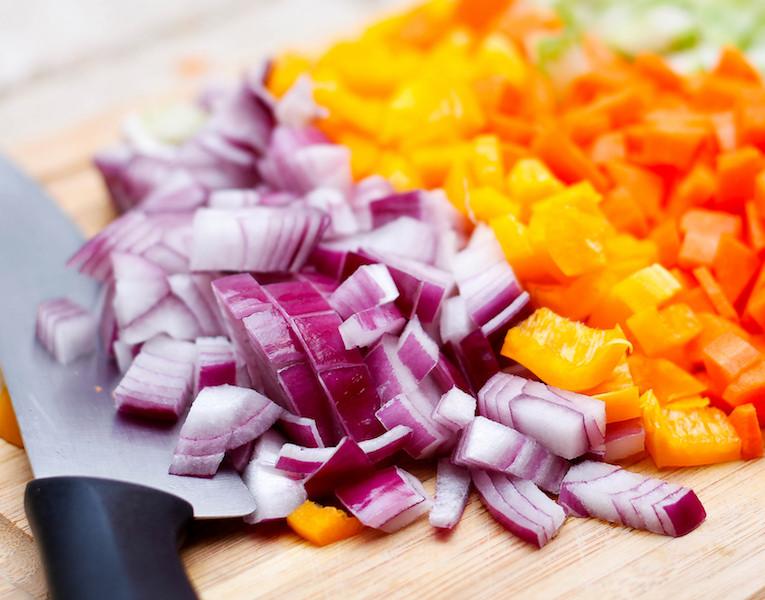
Flickr/Marco Verch
Out of all of the onions, you’re most likely to see red onions served raw. These mild and sweet onions can range in size from a tennis ball to a grapefruit with purplish-red skin and a purple-and-white flesh inside. Red onions are by far the prettiest, lending a bright purple color to any dish. They’re great for topping salads, sandwiches and tacos.
Red onions are even better when they’re sweet and caramelized with balsamic on top of a burger or in a quesadilla. You could even serve them as a vegetarian main dish.
Shallots
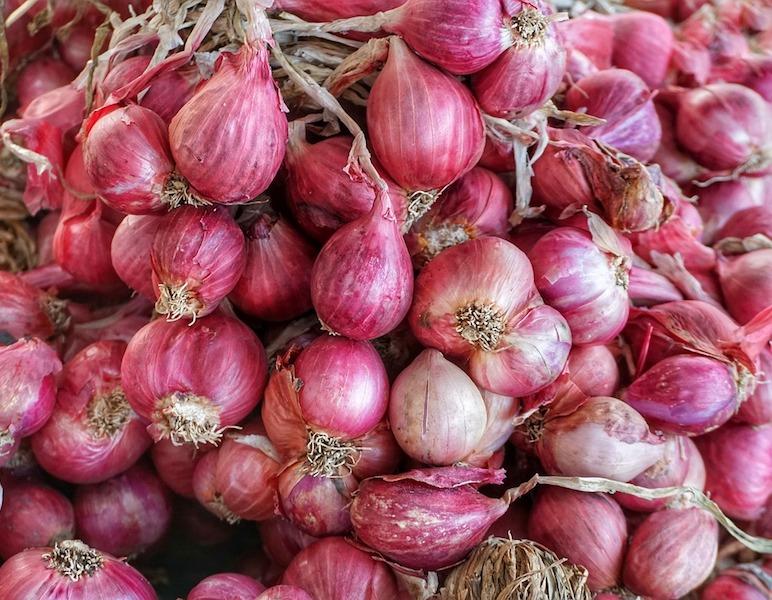
PixabayShallots are somewhat like a garlic and onion hybrid. They have a sweet and mild flavor with a hint of pungent garlic. You’ll find shallots in all shapes and sizes, but the skin is usually the same with a pink or orangey papery outer layer and a violet flesh. Sometimes the flesh might be a darker purple depending on where you’re looking.
Where would French cuisine be without shallots? Shallots have a signature smell that’s unlike any other onion. They’re notoriously useful in all kinds of condiments ranging from that vinegary sauce (mignonette) served with raw oysters to your basic vinaigrette. You can also use shallots throughout all sorts of Asian cooking.
Leeks
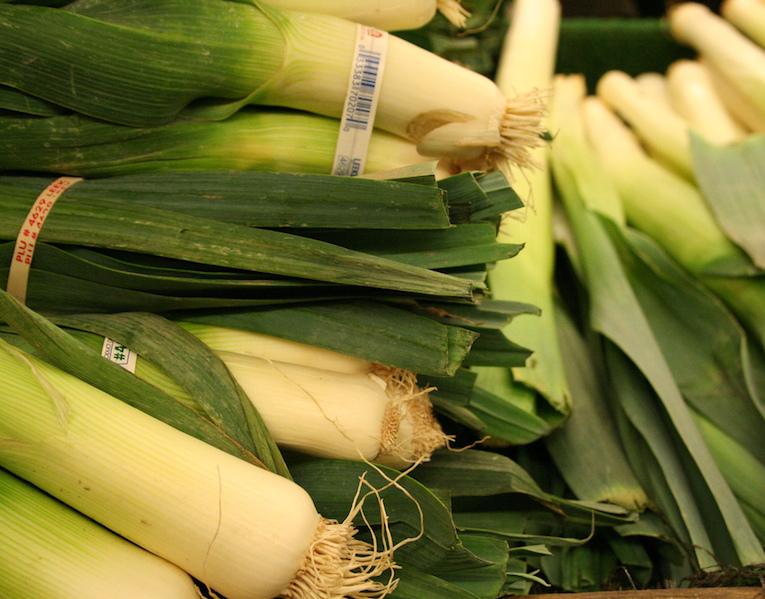
Flickr/Karen Thornton
A leek looks like a giant scallion. They have a mild onion-like taste and just like scallions, the white bottom part holds most of the flavor, while the darker green portion is more of a light flavoring agent.
Leeks are great for flavoring a broth, lending an extra layer of flavor to soups and stews or adding a crunchy and colorful element to omelets and quiches. You can add the chopped up bottom portion of a leek to your salad or use pieces of the chopped leek as a garnish. You’ll never go wrong with a pot of creamy leek mashed potatoes.
Scallions
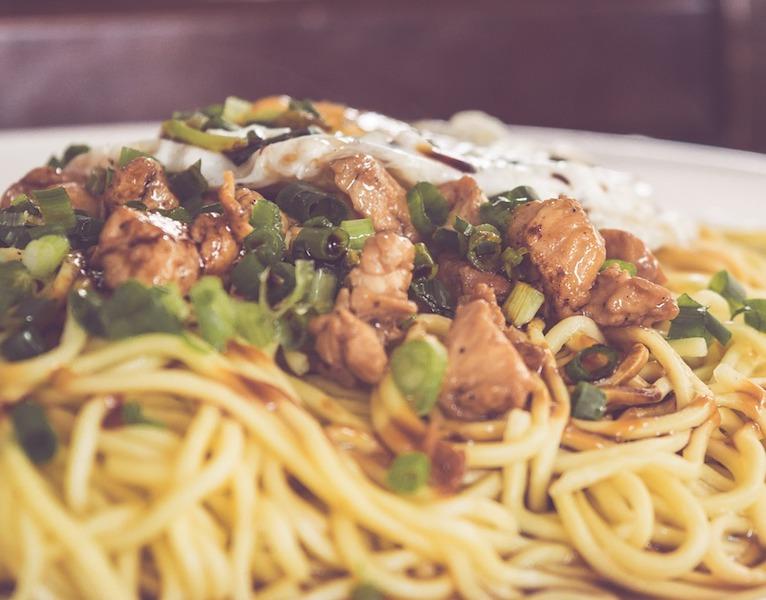
Pixabay
With a much more mild flavor than most onions, scallions (also called green onions) are long and skinny with a hollow and long bright green body and a white bulb-like tip. The majority of the scallion’s flavor is concentrated at the white bottom, which tends to look like a mini onion.
Scallions serve as more of a garnish than other onions. When scallions are chopped, the tiny bright green rings look beautiful on any dish. They’re awesome for topping off a soup, adding color to a salad, making savory scallion pancakes, stuffing into dumplings or adding a pungent kick to any creamy dip. In a lot of Asian cooking, scallions are used as a flavor base next to garlic and all sorts of spices blends.
Vidalia Onions
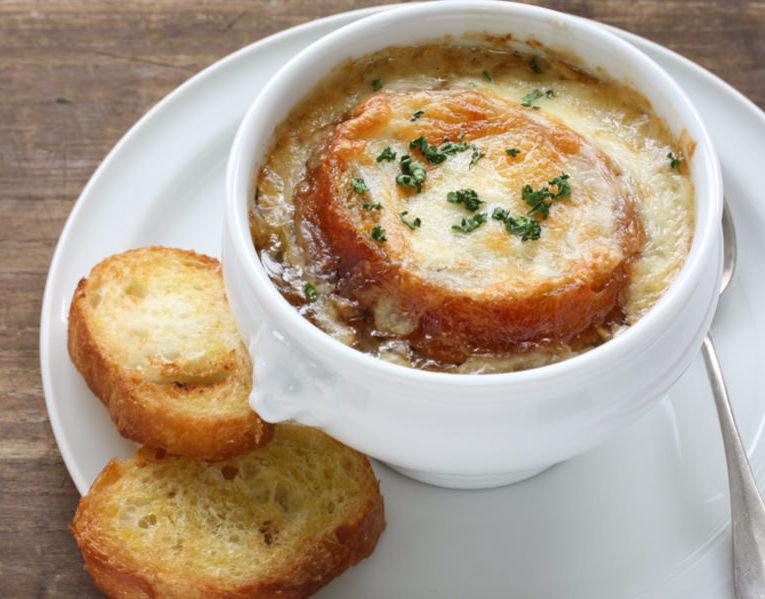
Flickr/sousvideguy
Sweet onions like Vidalia onions are ideal for French onion soup. You’ll know a real Vidalia onion when it’s been grown in or around Vidalia, Georgia. They’ll have a golden-orange outer layer with white flesh inside. Roast these sweet onions and use them to make sauces, onion rings, salad dressings, soups, savory pastries, pizza and everything in between.
Pearl Onions
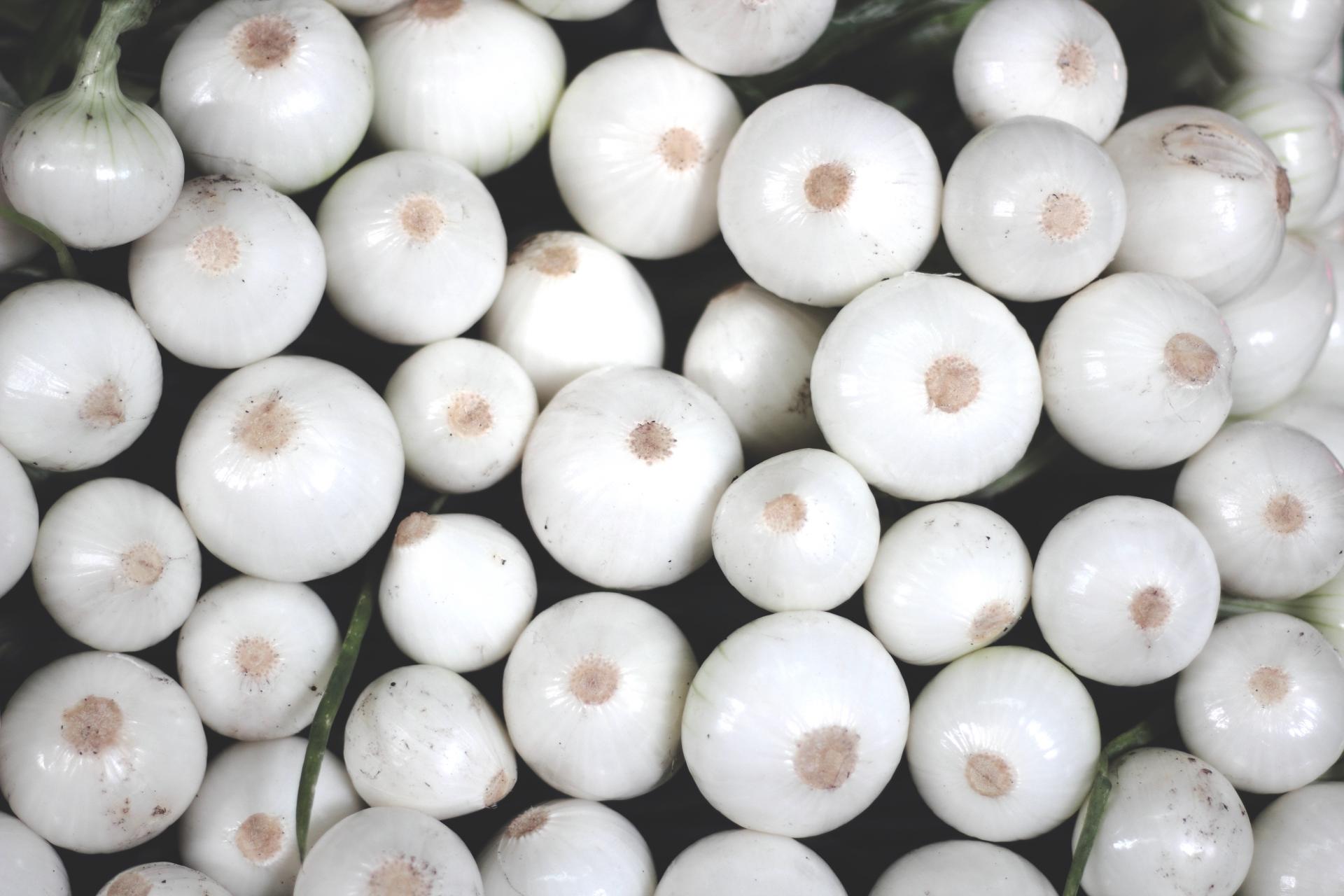
Unsplash/Obed Hernández
Tiny white-skinned onions, known as pearl onions or baby onions, are ideal for pickling. The easiest way to cook them is to dunk them in boiling water and then straight into a bowl of ice water to easily peel off the skin. You’ll see pearl onions sliced in half and tossed into a salad, tucked into a sandwich or used as a cocktail garnish, mainly for martinis. Glazed pearl onions can make a sweet and easy side dish for any holiday.
Cipollini Onions
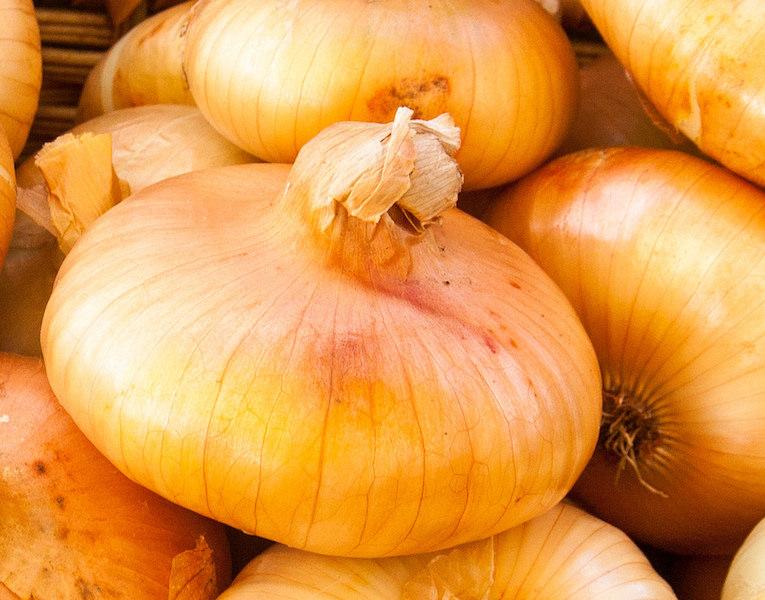
Flickr/Paul VanDerWerf
You might recognize cipollini onions as the small disk-like pale yellow onions that you’ve seen on your plate at an upscale restaurant. Cipollini translates to “little onion” in Italian. They’re sweeter than most onions, which make them the ideal candidate for roasting, grilling and caramelizing.
Since cipollini onions are small, there’s no need to cut them. Once they’re roasted they’ll become tender enough to melt right into your mouth. If there was ever a time to buy a cast iron pan, it would be to roast cipollini onions until they reach soft, sweet and golden brown perfection.
The next time you’re at the grocery store standing in front of hundreds of onions, you’ll be able to pinpoint exactly which onion you need for the job.
RELATED
These Tear-Free Onions Are Changing The Cooking Game
6 Clever Ways To Cut An Onion Without Crying
What The Colors Of Your Fruits And Veggies Say About Their Nutrient Content











